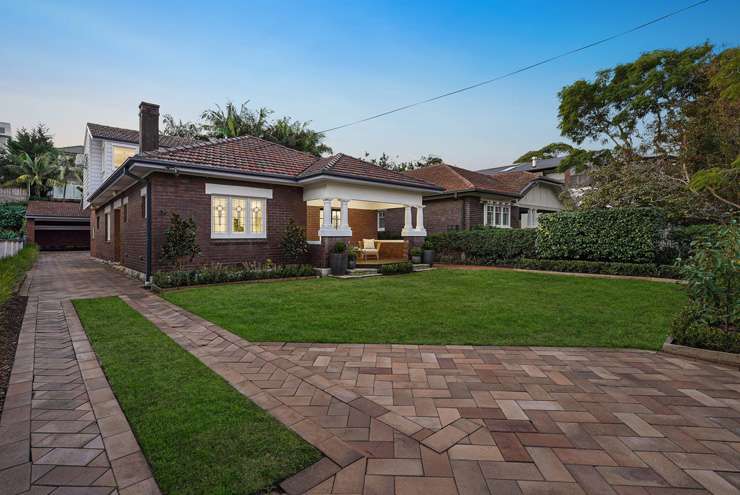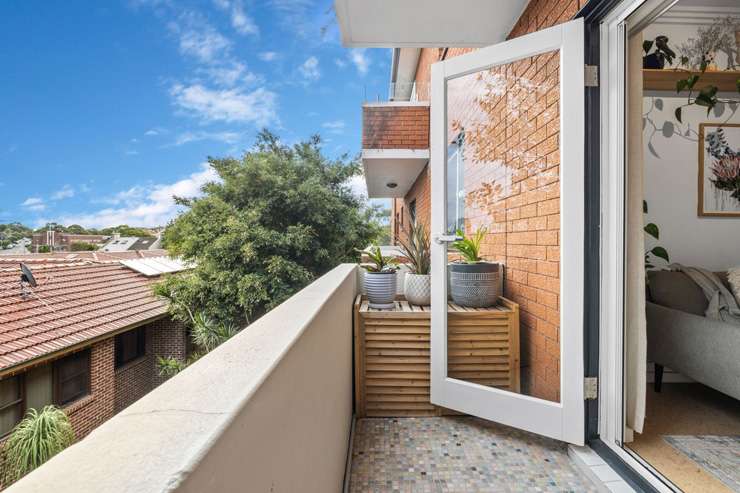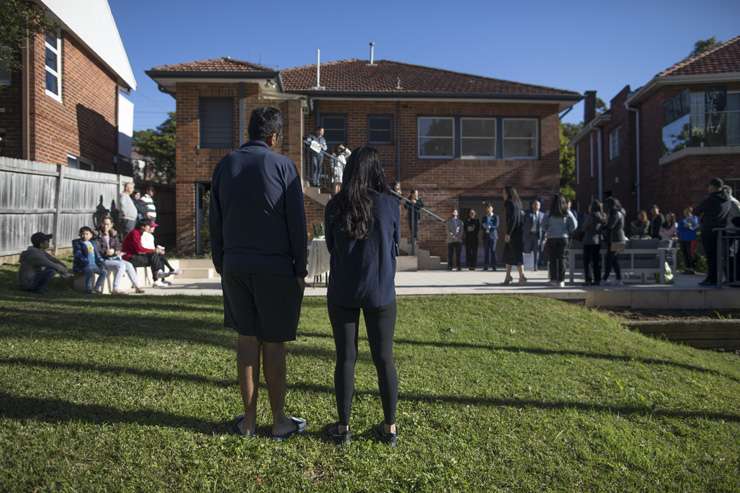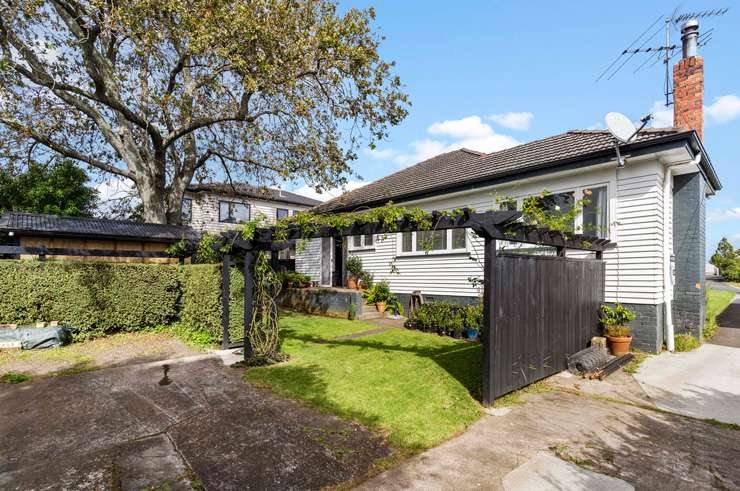New Zealand property values have only started to hit the bottom but across the Tasman prices are on the up with packed auctions being seen and big prices being fetched.
While the Australian and New Zealand markets followed a similar pattern with post-Covid price booms they have diverged with demand in Australia outstripping supply and fuelling a bounce back.
Reasons for the surge in demand there include high net migration, with the trough in the market being reached back in February, say experts.
New Zealand’s more aggressive OCR hikes have contributed to the market stalling here for longer, although some in the industry say the bottom of New Zealand’s market is not far away.
Start your property search
In Australia, some agents have been blown away by the demand they are seeing.
In Newtown, a bohemian inner-city suburb in Sydney, Ray White Erskineville agent Astrid Joarder pointed to a severe lack of stock as being behind the big number of first-home buyers fighting for a 59sqm apartment.
She told OneRoof a first-home buyer scrapped it out against 26 other bidders to nab a tiny one-bedroom unit, paying A$847,000 (about NZ$915,500) which was significantly more than the A$650,000 price guide.
Read more:
- 'Bottoming out': Where house price falls are coming to an end
- Is it cheaper to buy a house in Australia?
- Gone in six minutes: Abandoned bach sells for $285,000 - double its RV
Interest rates have gone up in Australia, too, but Joarder says the Australian Reserve Bank’s moves to quell inflation have done little to stem the demand she and other agents are seeing.
“We had 27 registered bidders, I think we had about 177 inspections over about three weeks and sent out about 40 contracts.
“The supply at the moment isn’t meeting the demand. That’s the big thing that’s behind prices going up and not just first-home buyers but also the larger properties.”
Joarder says the first-home buyer who won last week’s auction had been looking in vain for a year, which though stressful for her probably gave her more time to save a bigger deposit.
She thinks Sydney’s tight rental market could be contributing to demand because sometimes mortgage payments are cheaper than rent, and she says some people have recently had rent increases of $100 to $300 a week.

A four-bedroom bungalow in Sydney’s Mosman was recently listed with an auction guide price of A$8.3m. Photo / Supplied

A one-bedroom unit in Sydney's Newtown sold at the end of last month to a first-time buyer for A$847,000. Photo / Supplied
Her comments come amid reports saying people looking for rental properties are finding the properties they are applying for are being taken off the market then re-listed at higher prices.
Buyer demand is high not just in first-home buyer price brackets in Australia but also at the pricey end of the spectrum.
A four-bedroom bungalow on the market in Mosman, a harbourside suburb on Sydney’s lower north shore, has an auction guide of A$8.3m (nearly NZ$9m) with agent Adam Reichman, from Ray White Double Bay, saying he already has indications the property could go for more.
Reichman says there’s a shortage of great properties in the northern suburbs and the eastern beaches, again citing supply and demand issues.
“There’s very strong demand right now, definitely, especially in that upper echelon. That A$10m to A$20m bracket now is exceptionally strong.”
Nick Goodall, CoreLogic NZ’s head of research, says a big reason for the divergence between the Australian and New Zealand markets is the number of listings available in New Zealand relative to Australia.
“They’ve got very, very low listings. It hasn’t really increased over the last couple of years whereas ours has.”
In New Zealand, total current listings of 35,000 is 13% below the peak of 40,000 prior to Christmas – but that’s still up 51% on the same time in 2021.
CoreLogic Australia figures show the total listings there is 137,156, with 33,000 of those added in the past month, but the research and analytics company says total stock levels have generally been trending down over time as demand rises.
“Total listings nationally are down -11% year-on-year and listings stock is sitting -34% lower than the previous decade average for May,” says Eliza Owen, head of residential research for Australia.
Though supply remains low, sales are up, she says: “Sales volumes have started to lift month-on-month, up to around 39,000 for the month of May and outpacing the volume of new listings added to the market in the same period.”
Last month, there were 79,000 sales across Australia but only those 33,000 new listings added.
Goodall says one of the reasons New Zealand’s sales volumes have fallen more than in Australia is because their OCR has not gone up as much.
The Reserve Bank of Australia increased its Official Cash Rate to 3.85% from 3.60% in early May and the jury is out on whether there could be more rises to come.
In New Zealand the RBNZ lifted the OCR this month .25 to 5.5% but has signalled that’s it for rate rises.
Goodall says the Australian rate is still significantly lower, and that adds to their buyer demand.
“They have definitely not been as aggressive in both their increasing over time and their tone in terms of what’s required.”
Goodall also says New Zealand had more restrictive measures put in place after the boom, such as the tough credit rules and the removal of interest deductibility for investors.
He points out Australia has a broader range of property types, too, which means there’s more accessible entry points for any type of buyer, and there are also affordability differences between the countries.

CoreLogic Australia head of residential research Eliza Owen says Australia’s slump in the market was shorter and sharper than New Zealand’s. Photo / Supplied

People at a Sydney auction last month. Recent research found nine in 10 aspiring first-home buyers were unable to purchase a property. Photo / Getty Images
While it is expensive to buy housing in either country, it’s less affordable for many here. At the end of the first quarter this year, 42.7% of the average Australian income earner’s wage went towards mortgage repayments on an 80% LVR mortgage – for New Zealand that figure is 50.7%.
But while Australian first-home buyers are still telling stories heard in New Zealand during the boom of constantly missing out on properties, first-home buyers here are now picking up a greater share of sales.
CoreLogic figures show first-home buyers picked up a record high of 25% of sales in April in New Zealand, while investors buying with a mortgage only picked up 20% of sales which is a record low.
In Australia, the portion of mortgage lending to first-home buyers is lower though it picked up through March, sitting at 16.5%, which is above a historic decade average of 15.7%.
Investor borrowing as a portion of all mortgage lending is also low in Australia but higher than in New Zealand, making up 33% of mortgage lending in March. Owen says while different factors are driving Australia’s recovery, the biggest driver is probably the net overseas migration the country is seeing.
“Australia has had a strong bounce back and the return of overseas migration since we reopened our borders in February last year.
“Net overseas migration for this financial year is forecast to be 400,000 and historically our pre-Covid decade average was quoted at 215,000.”
Australia had policy changes through the pandemic which allowed shorter-term visa holders to stay for longer, and there are fewer people leaving Australia, Owen says, and these factors have meant housing supply is not able to match demand.
Like New Zealand has seen, Owen says vendors in Australia are holding out for more price growth before listing, which is adding to the low supply issues and thus more competition for the properties that are available.
“Even though selling conditions are starting to improve we’re not finding as many vendors bringing their property to the market and that could be because psychologically they are thinking they are not going to get as good a price as they could a year ago so they’re going to wait until those prices are even higher.”

A three-bedroom home on Cambourne Road, in Papatoetoe, Auckland, sold under the hammer last month for $765,000, above agent and vendor expectations. Photo / Supplied
Another reason is the fact there was so much transacting going on in 2021 and early 2022 many people have only recently purchased so don’t need or want to sell at the moment, she says.
She also says Australia’s slump in the market was shorter and sharper than New Zealand’s with the trough in Australia coming in February.
“It was one we characterised as a short but sharp decline and because it came off an even stronger swing home values were still higher than at the onset of Covid even when they bottomed out.”
She, too, says the Australian Reserve Bank has been less aggressive than New Zealand’s, but unlike New Zealand she says Australia is facing the possibility of further rate hikes this year.
“That does put some uncertainty to the recent bounce back we’ve seen in home values so even though we have shown signs of recovery in the last two months it’s not clear we’re completely out of the woods.”
While New Zealand’s recovery is slower, it’s not all gloom in auction rooms.
CoreLogic Australia reports the auction clearance rate for its combined capitals for the week ending May 28 was 71.5%.
While Ray White New Zealand reports a lower clearance rate of 54.4% this month, that’s up 7.7% for the same period last year.
Lead auctioneer Sam Steele says the increase of properties selling at auction is an encouraging sign, saying there has been a noticeable increase in sales.

CoreLogic NZ head of research Nick Goodall says Australia hasn’t been as aggressive as New Zealand in raising interest rates. Photo / Supplied
More interesting has been the increase in the number of registered bidders.
A case in point is the auction of a Papatoetoe property which had 10 first-home buyers bidding against each other and Steele says that is a “very, very strong” outing for any market anywhere in the country.
He says first-home buyers may have sensed the market has changed dramatically and that perhaps New Zealand is at or near the bottom.
Ray White Mangere agent Pat Lapalapa marketed the tidy three-bedroom 1960s weatherboard house on Cambourne Road, which sold for $765,000, not the high $600,000s/early $700,000s he was expecting.
Lapalapa says such a large number of registered first-home buyers is “not normal” but reflects a big uptake mortgage brokers are seeing in first-home buyer pre-approvals.
“With the recent announcements just around the interest rates I think a lot of first-home buyers are saying ‘well, okay, this may be the bottom of the market’ so they are getting that confidence to come back into the market.”
Steele says investors have also begun to come back a little bit, for similar reasons: “I think a lot of investors have sort of waited and might sense that if we’re not at the bottom we might be pretty close so this is probably a good time to buy.”
- Click here to find properties for sale in New Zealand




































































